How to achieve Product-Market Fit by Dan Olsen
There is a stacking sequence to achieve product-market fit. Whether you're a big or small company, the process is the same.

Prologue
This article is based on a talk given by Dan Olsen and hosted by Shyvee Shi as part of the Product Management Learning Series.
The recap of the talk written by Shyvee Shi and Andrew Altschuler can be found here
Dan's Background
Dan Olsen started his career designing nuclear submarines for the Navy. He left the Navy to get his MBA at Stanford where he learned about the field of product management.
He went to Intuit in the late 90s which was the best place to learn product management at the time.
He took what he learned at Intuit and brought it to various startups in Silicon Valley, like Box.
He documented his best practices which culminated into the book The Lean Product Playbook
How to achieve Product-Market Fit
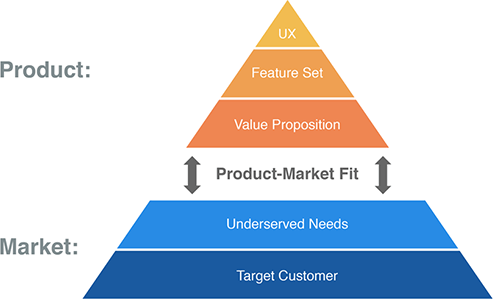
Every product is an experiment. You’re like a scientist asking questions to validate your hypothesis.
Shown in the pyramid above, there is a stacking sequence of steps to achieve product-market fit.
Whether you're a Fortune 500 company or a Solopreneur, the process to achieve product-market fit is the same.
Segment down to your target customer
Everything starts with your target customer. This is the customer you're going to give value.
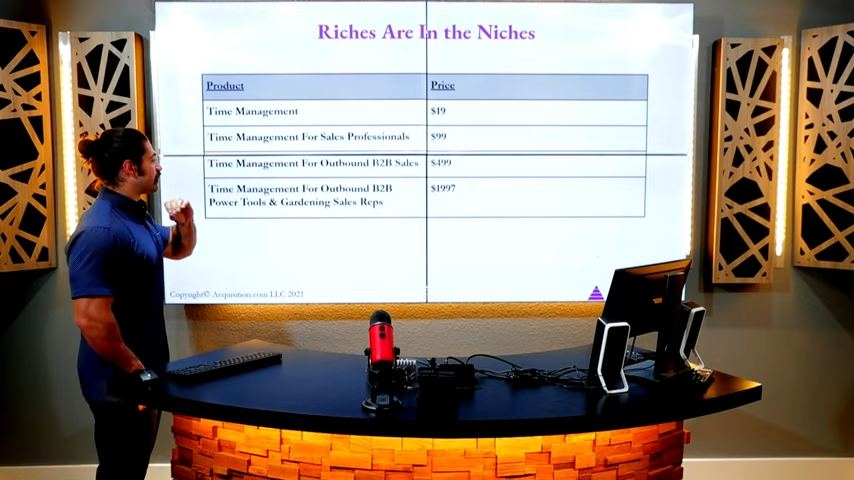
To create a target customer you should segment your initial customer, many times.
Alex Hormozi gives an example of creating a time management product for Outbound B2B Power Tools & Gardening Sales Reps. He firsts starts with anyone looking for time management tips. The then segments this general population into sales professionals looking for time management tips. He then segments those sales professionals into ones focused on outbound B2B sales. Then he segments those outbound B2B sales professionals into ones focused on power tools & gardening.
Through this hyper focus you can find your target customer's unsatisfied needs.
Find your target customer's unsatisfied needs
Personally, I've seen many software teams race to design and implement a solution to address a perceived customer need. This is a natural tendency since as software engineers we're taught to solve problems.
Dan calls this living in the solution-space.
The answer is to separate the solution from the customer need. To go deep into what Dan calls the problem-space.
Customers aren’t good at articulating their needs. To find their unsatisfied needs you go deep into the lives of your target customers.
What brings a product from good to great is identifying your target customer's underserved needs accurately. - Dan Olsen

Dan calls this peeling the onion. One technique to peel the onion is the five whys technique.
Personally, I'm a fan of shadowing your target customer and working side-by-side with them for a day or two. You learn more by working next to your target customer than you do from an interview. People habituate to their environment so much they don't realize what they're doing is inefficient and don't bring up all their unique needs in an interview.
Once you get really clear on their needs you write your customer needs hypotheses. An example from Dan's days at Intuit were customers had a need to reduce their audit risk.
You then validate your hypotheses with your target customer through one-on-one conversations. One-on-one conversations help avoid groupthink.
Understanding Highest-Level Needs
During your conversations you want to understand your target customer's highest-level needs.
You find this by asking them "Why is this important to you?" until you see recurring answers across conversations.
Questions to understand customer's highest-level needs
Why is this important to you?
How might this help you?
How valuable would this benefit be to you? Why? Why not?
Through these questions, your needs hypotheses will converge into related needs, like those from Dan's book shown below.

In the example above his target customer is looking to feel confident, save time, and save money.
Now you understand your target customer's highest-level needs. Next, you prioritize them to determine which you should solve first.
Prioritize your target customer's unsatisfied needs
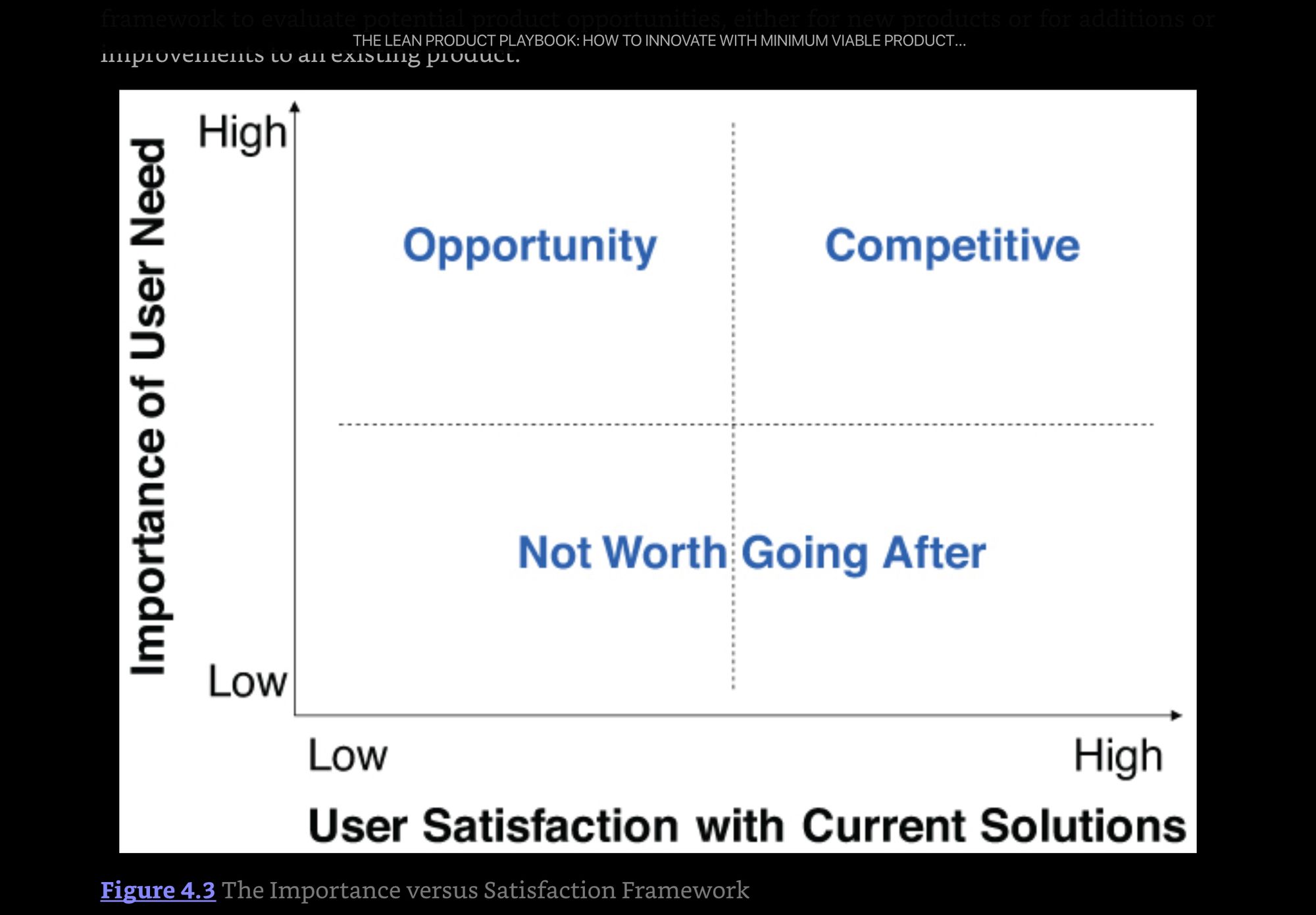
The way you deliver product-market fit is to address a need that's of high importance to your target customer.
Dan's Importance vs Satisfaction framework helps you find this need.
Now let's break down the quadrants.
The Bottom Quadrants
Your target customer won't buy if you solve a problem that's not important to them, regardless of their satisfaction level with current offerings. Many failed products are launched without the proper research to validate that the target customer's need for a solution is high. The Segway is a great example of this. The $5000 Segway met a need no one had when it launched in 2001.
The Competitive Quadrant
Competitive markets are those where there's a high customer need but the user is satisfied with current solutions. In these markets you have to be 10X better. The Tesla Model S is a great example of a product that had to be 10X better. It entered the highly competitive automobile market and had to be compelling on design, range, user-experience, autopilot, and more to sway users away from other options.
The Opportunity Quadrant
The opportunity is where customers need a solution and are unsatisfied with current offerings. This is your opportunity.
Tesla Motors started in the opportunity quadrant
Before the Model S, Tesla had the Roadster which existed in the opportunity quadrant. At inception, Tesla was a high-end electric sports car maker. Their customer base was satisfied with high-end sports cars but there were no high-end electric sports cars available in the early 2000s. They segmented their market to find an unmet need.
These opportunities don't live forever. People tend to reach the same conclusion around the same time. Here the race to be first and win consumer mind-share begins. Uber vs Lyft is a great example of this.
Take your customer's highest-level needs and map them by importance and satisfaction based on responses from your target customers.
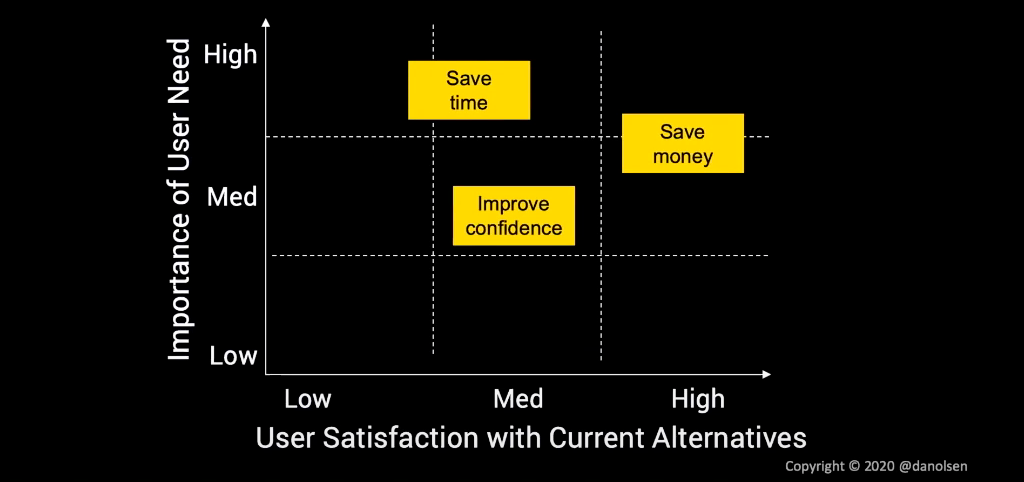
In the example above, Dan found the key opportunity was to save time for users of Turbotax.
Next brainstorm benefits to address these needs.
Solve your target customer's unsatisfied needs
Kano Model
In the 1980s, Noriaki Kano published insight that not all benefits are equal in the eyes of the customer. Some benefits create higher levels of customer satisfaction than others.
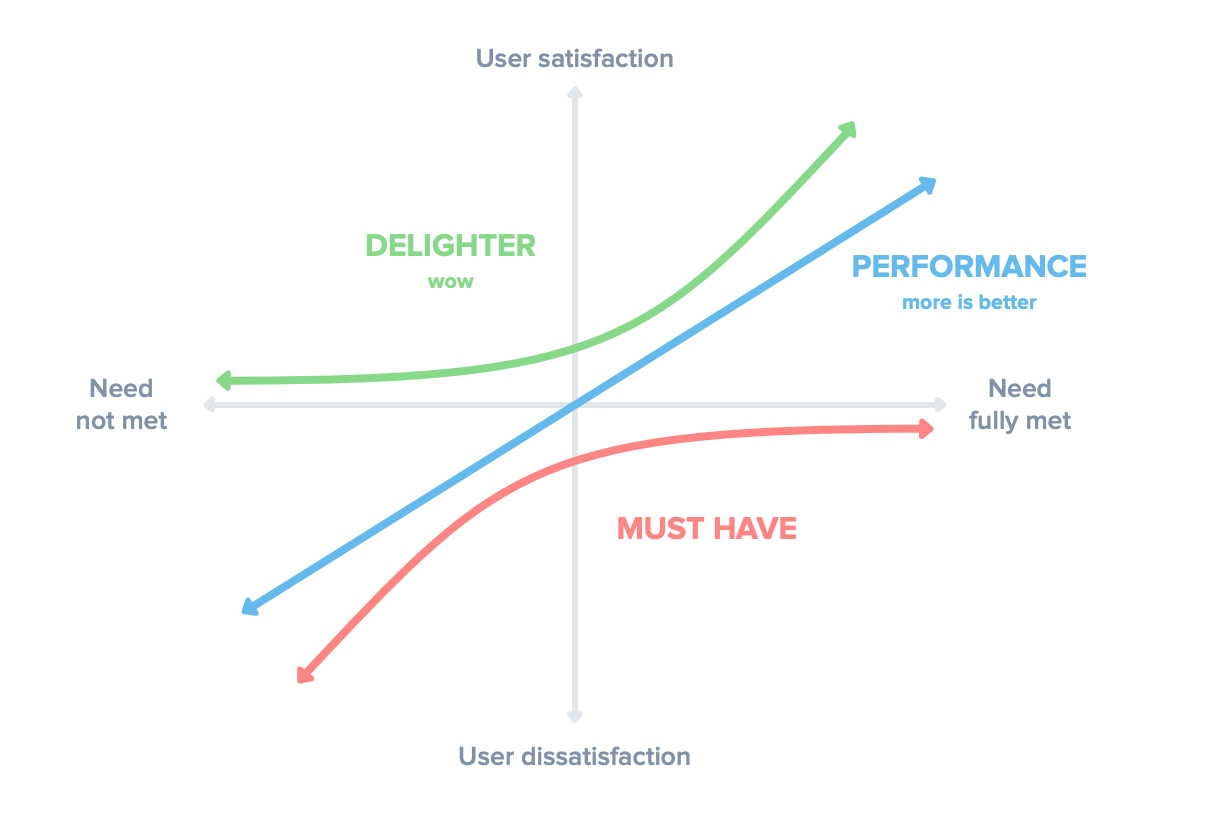
In the graph above the red line represents benefits that meet the customer's basic expectation. Going back to the example of the Tesla Model S. Customers expect the car to have seat belts. They would not buy the car without seatbelts regardless of other benefits. On the flip side, buying a car with 100 seat belts doesn't make sense either. Once a car has 1 seat belt per person, the user's satisfaction is met. It won't increase as you add more seat belts.
The blue line is where most of the competitive action happens. This is where as you improve the feature the user satisfaction goes up. An example, is trip duration. As an airline, the faster you get your customers to their destination the more likely they are to buy a ticket from you instead of a competitor.
The green line represents surprises you can sprinkle through your experience that require little investment. Kevin Hale, the co-founder of Wufoo said this is about putting a smile on your customer's face. Customers won't use your product for these benefits alone but these delights are great ways to get your product's awareness spread through word of mouth. I used to fly Ultimate Air Shuttle out of Cincinnati and they would provide cinnamon rolls, croissants and other delicious breakfast items on the flight to Chicago. I wouldn't fly with them just for these pastry items but I still remember the experience fondly. Delightful benefits add an extra touch to your product on top of the other required benefits.
Your benefits represent your company values
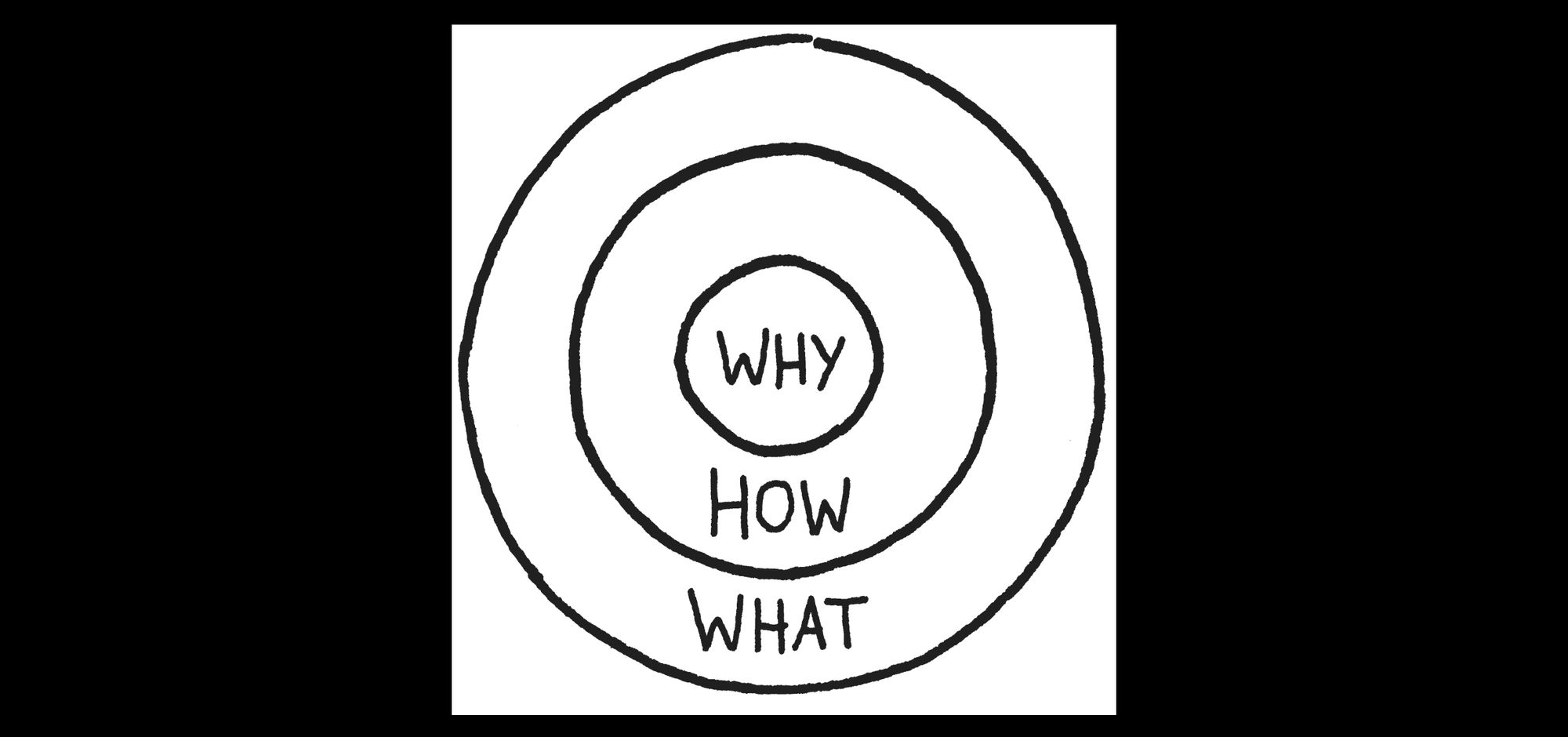
This wasn't mentioned in Dan's talk but your delivered benefits reflect your company's values.
The main idea behind Simon Sinek's book Start with Why is once you know your company's values you have a decision making framework.
Your company's values are represented through the benefits you bring to the marketplace. Since your values are unique so is your approach to solving your target customer's unsatisfied needs. Your values help you say no to many benefits and shout YES to specific ones.
Yvon Chouinard, the founder of Patagonia, is a great example of this. Yvon says YES to sustainability.
The most famous example of this is Steve Jobs. Apple's intense focus led to their multi-trillion dollar market cap with just a handful of products.
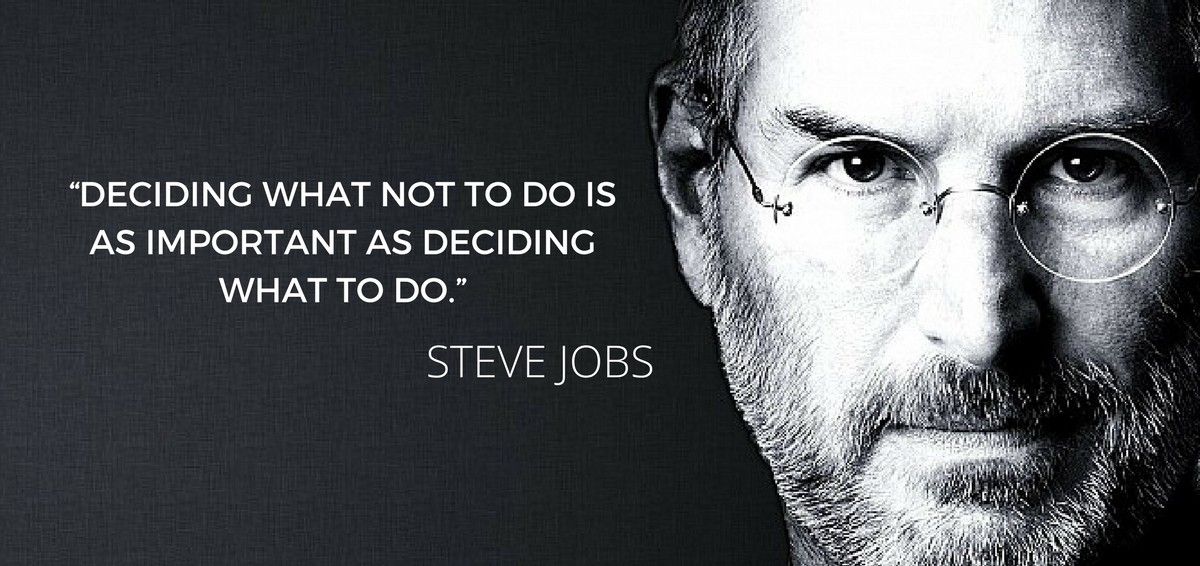
Your company's values and the Kano model help you map your benefits against your competitors and focus on where you want to be competitive and add delight while meeting basic expectations.
This is your value proposition.
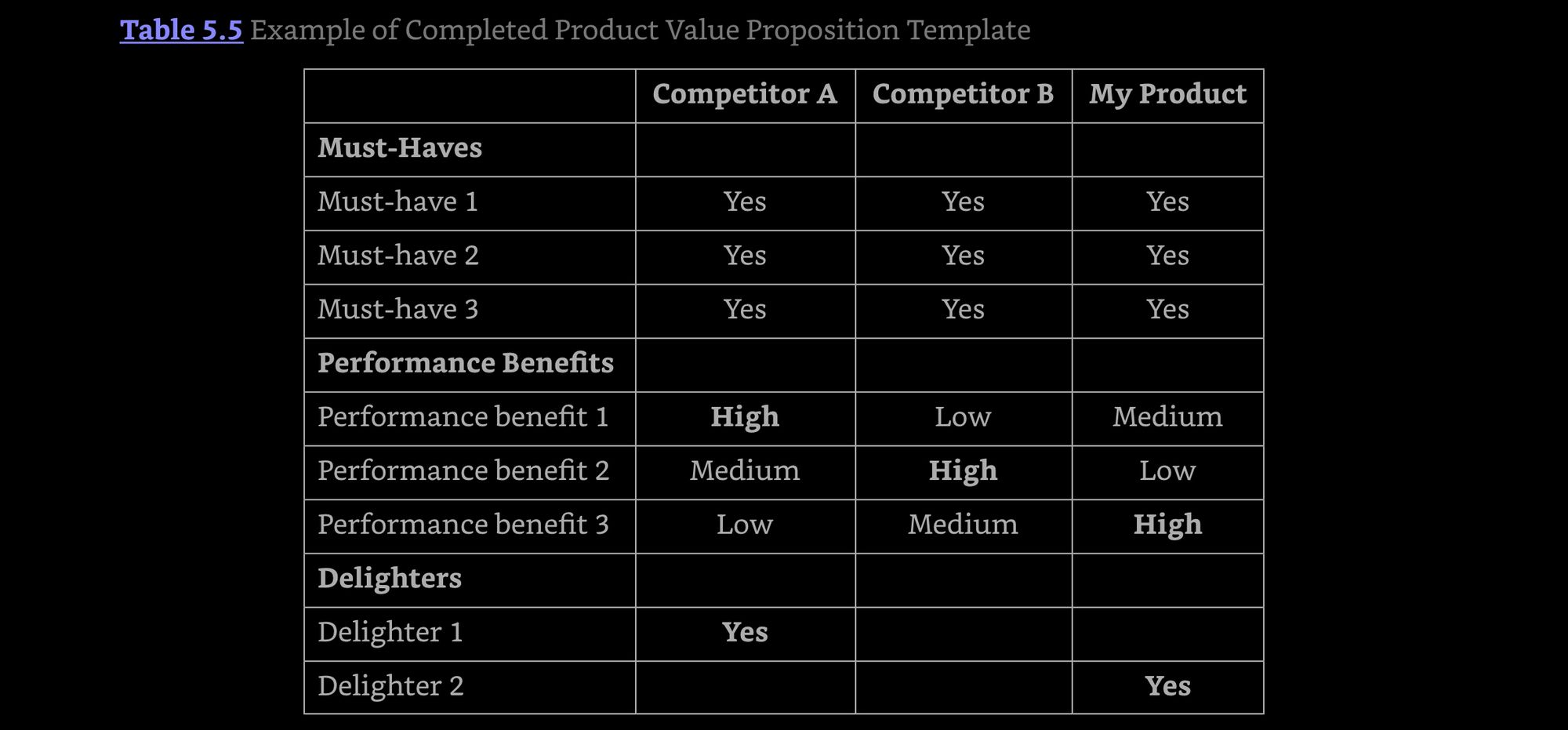
While it's easy to dream you'll destroy your competitors on all fronts, the truth is to be the best on one benefit is hard enough and all you need to be a big business. Being best at one benefit helps you win mindshare for that benefit with your target customers. For example, when you think yoga pants you think Lululemon; when you think search you think Google; and when you think coffee you think Starbucks. Those companies offer other benefits, like regular clothes, email, and tea respectively but there's a core benefit you associate with them.
Plan your Minimum Valuable Product
Up until this point we've been living in the problem space. Now, we hop to the solution space.
With your software team you brainstorm features that satisfy those benefits.
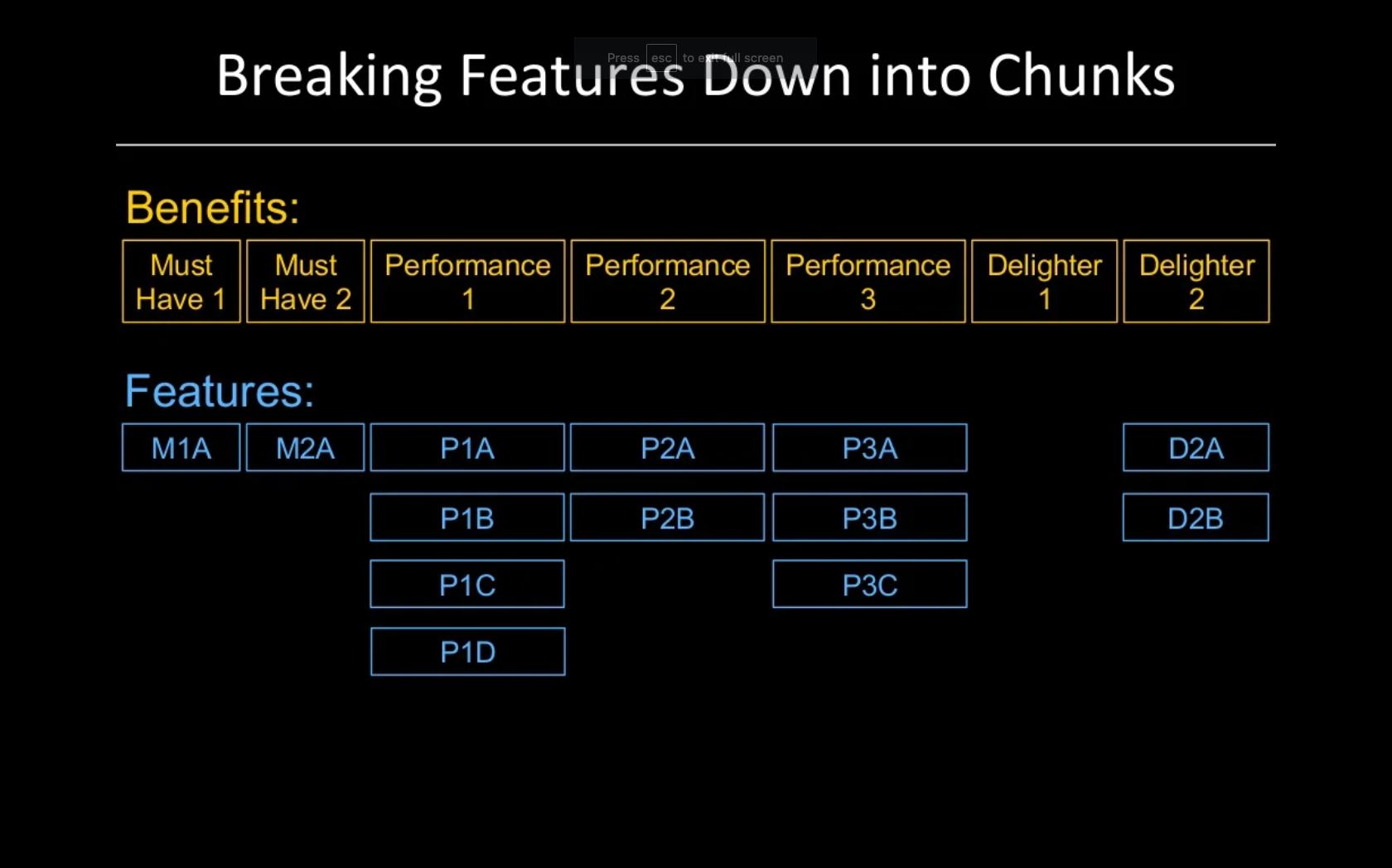
Why Minimum Valuable Products fail
In my experience, many view a minimum valuable product (MVP) synonymous with version 1. Aside from shipping something they have no plan and their MVP shows it.
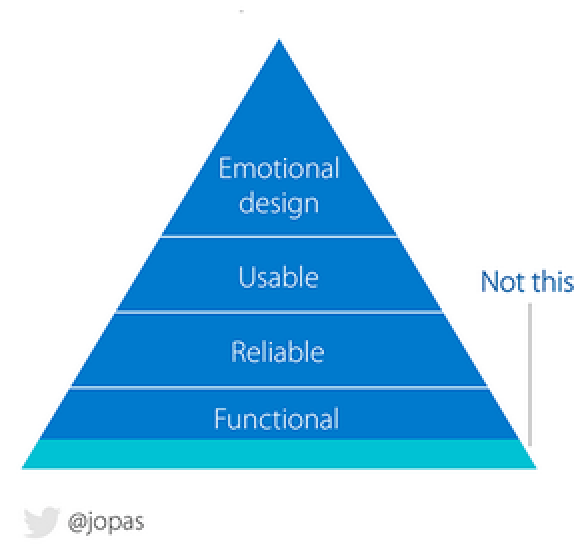
Many MVPs are just a subset of the total functionality, buggy, barely usable, and evoke no emotion. This is shown in the image above created by Jussi Pasanen.
These MVPs only meet the bare minimum benefits. A good example of a failed MVP from the automotive world is the Yugo. I've personally been in one. Even though I made it to my destination, I prayed to every religious deity I could think of during the ride.
Software teams like to quote Reid Hoffman saying "If you are not embarrassed by the first version of your product you’ve launched too late." They miss the context of Reid's quote which is have a sense of urgency and reduce your time-to-market.
Google's first homepage was an embarrassment in design but the search results were leagues ahead of what existed at the time. It focused on competing on that single benefit. Going back to the Kano Model, quality search results were a competitive benefit, represented by the blue line in the Kano Model graph above. The more investment Google put into making search results better the higher their customer's satisfaction.
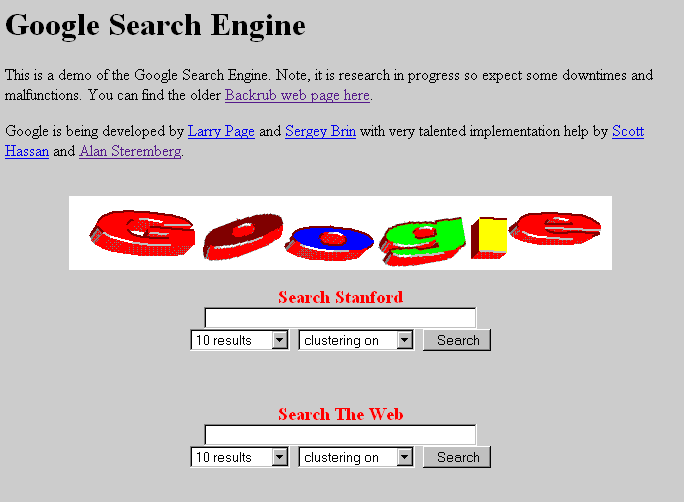
Another example of a failed MVP is one that is over-scoped. Through good intentions from leadership, the software team goes from planning a minimum viable product to planning a maximum variable product. In addition, the target date rarely changes until someone is brave enough to speak up and say "we can't meet that deadline."
At 1904labs we've created a method called "Determinstic Agile" to help alert everyone when scope creeps up. We then foster conversations to articulate a new roadmap based on data. Contact us if you're interested in learning more about that.
You don't know if you provide value to your target customer until they use your product. Only when your target customer integrates your product into their lives is your hypothesis validated. You want to validate your value proposition as soon as possible so you want the minimum needed features to do that.
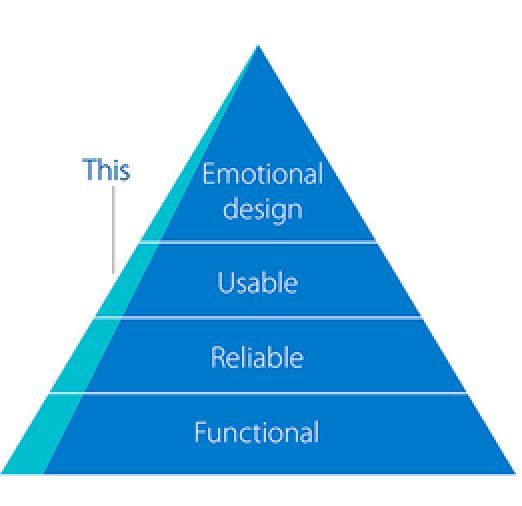
Your MVP comprises benefits that meet your customer's basic expectations, differentiate you from your competitors, and delight your customers. The triangle above shows this.
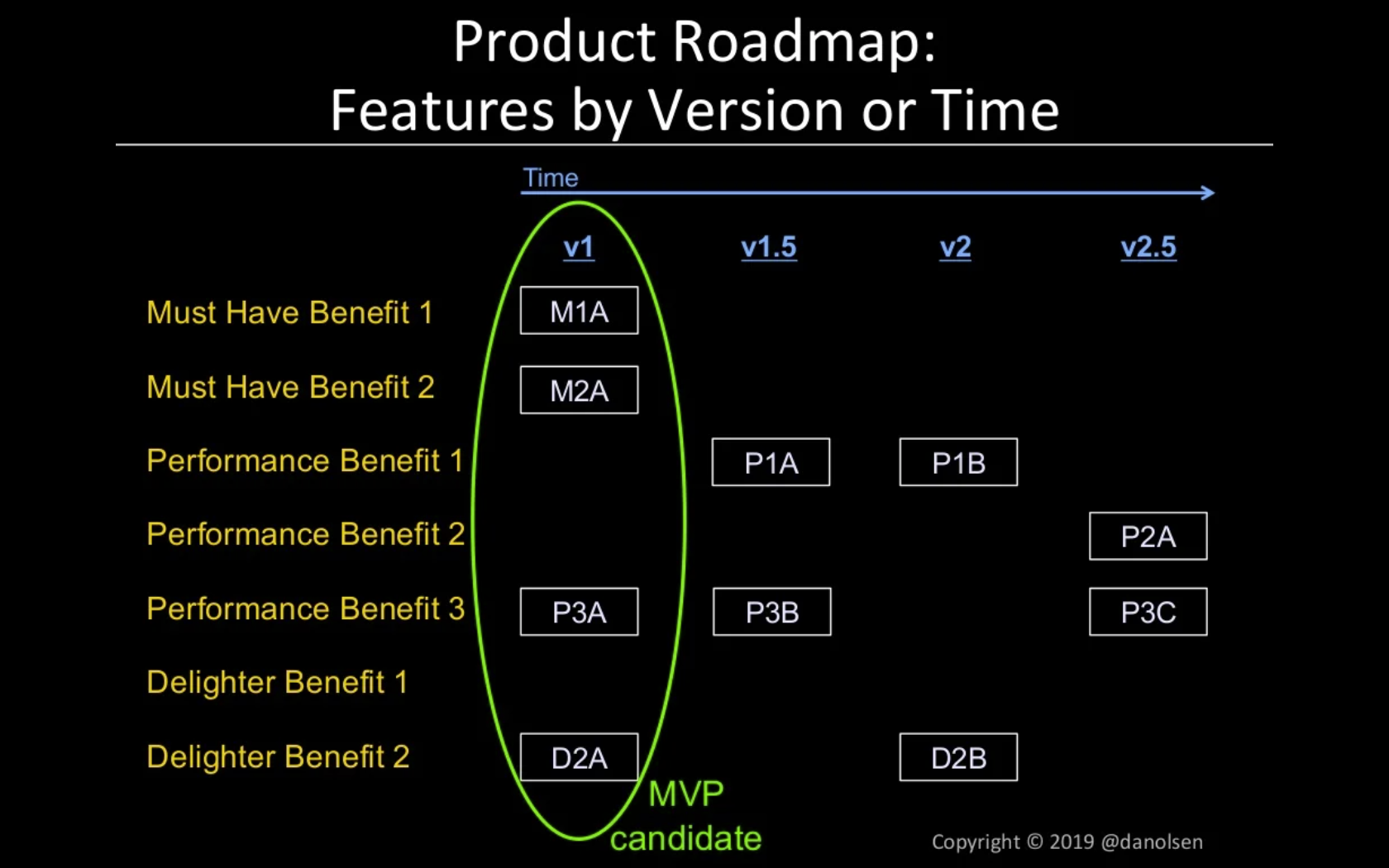
Like Google's focus on search results, your MVP needs to outshine all competitors in one benefit.
Google also added the "I'm Feeling Lucky" very early in its history to add that delightful benefit to the user's search experience. Results that get you the answer you want paired with a button that sparks serendipity was a VERY powerful combination in the late-1990s and early 2000s.
Checklist when Creating Your MVP
MVP includes must-have benefits (red line in Kano Model)
MVP is superior in at least 1 benefit (blue line in Kano Model)
MVP has a unique delighter (green line in Kano Model)
With your features in hand there are many different ways to validate your MVP quickly. From low fidelity solutions like Balsamiq to low-code tools like Bubble, you can show your features quickly, get feedback, and test your value proposition.
The expectations of your target customer are always changing. Today's competitive advantage eventually gets overtaken by new competitors. The late Clayton Christensen seminal book The Innovator's Dilemma details how most companies miss out on new waves of innovation.
This means you need to always be talking with your target customers and be finding how the latest advances can satisfy their new underserved needs.
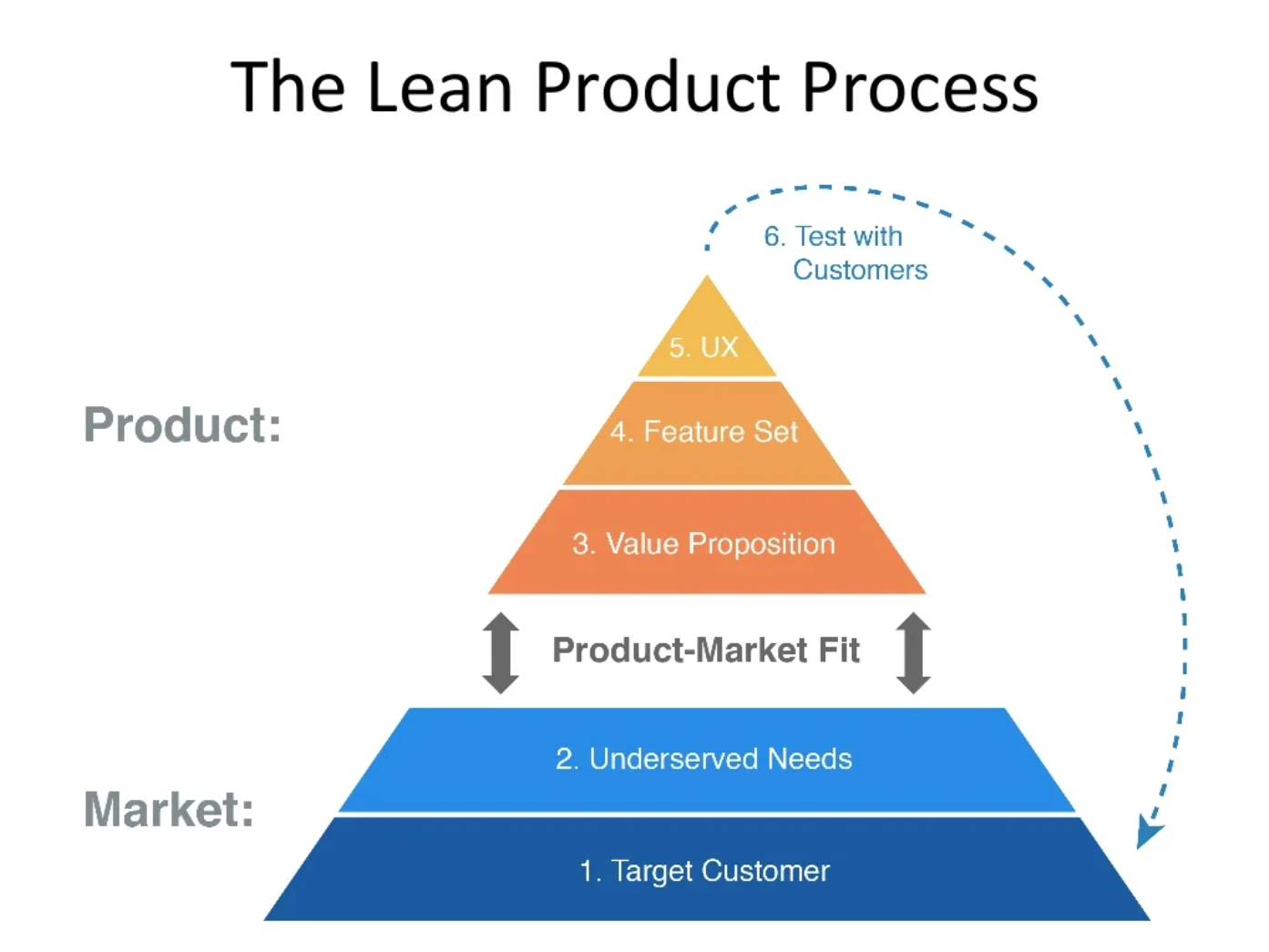
Click the link below to watch the video that inspired this article.


